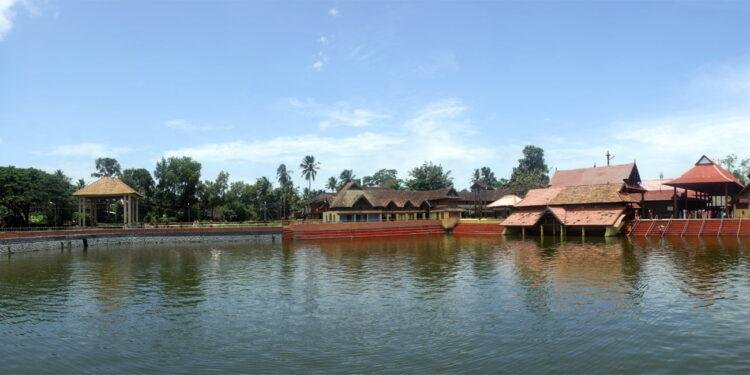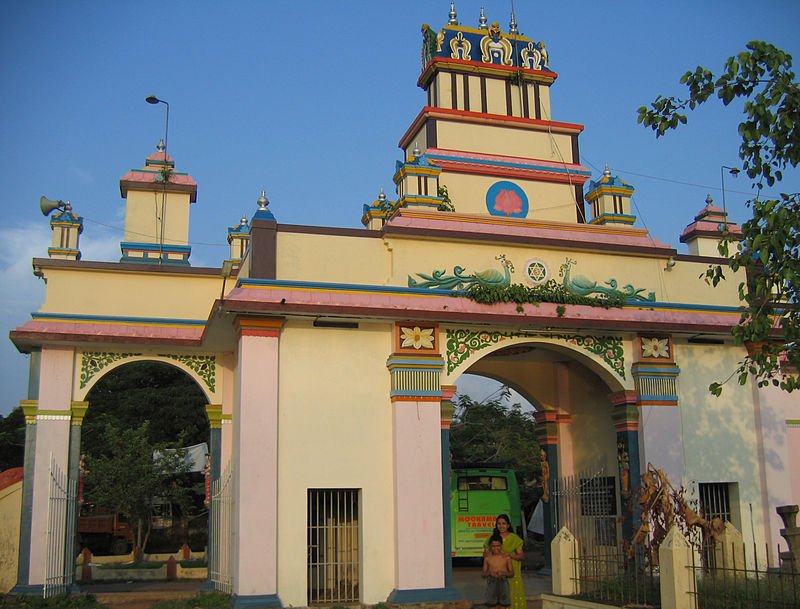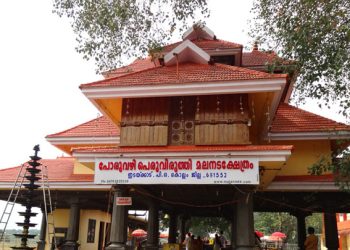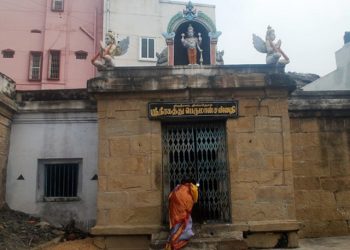Ambalappuzha Sri Krishna Temple idol at Ambalapuzha is likened to Parthasarthi with a whip in the right hand and a Shankhu (sacred conch) in the left. This temple is directly associated with the Guruvayoor Sree Krishna Temple. During the raids of Tipu Sultan in 1789, the idol of Sri Krishna from the Guruvayoor Temple was brought to the Ambalappuzha Temple for safe keeping.
Shrine’s History
The Ambalappuzha Sri Krishna Temple have been constructed throughout fifteenth ? seventeenth AD by the neighbourhood ruler Chembakasserry PooradamThirunal-Devanarayanan Thampuran. The idol at Ambalapuzha is compared to Parthasarthi with a whip in the right hand and a Shankhu (consecrated conch) in the left. This temple is specifically partnered to the Guruvayoor Sree Krishna Temple. Throughout the attacks of Tipu Sultan in 1789, the idol of Sri Krishna from the Guruvayoor Temple was brought to the Ambalappuzha Temple for safe keeping. Ambalappuzha Sree Krishna Temple is well known all over India for the Palpayasam, a day by day offering of delectably sweet drain porridge.
The payasam served in the Ambalappuzha Temple is acclaimed around Hindus. This sweet pudding made of rice and milk has an intriguing fanciful legend behind it. It is accepted that Guruvayoorappan arrives at here day by day at the time of Palpayasa Nedyam to have it. The Amabalapuzha Temple Festival was built throughout the fifteenth century A.D. At this point, a piece of the Travancore was governed by the Chembakassery Devanarayana Dynasty. The leaders of this tradition were profoundly religious and chose that an icon of Lord Krishna was to be brought to the Amabalapuzha Sree Krishna Swamy Temple from the Karinkulam temple.
The Aaraattu celebration starts with the banner raising function on the Atham star in Meenam (March-April). The critical Aaraattu celebration happens on the Thiruvonam day of the same month.in this temple, “Pallipana” is performed by “Velans” (magicians) once in twelve years.

Legends Associated with This Shrine
According to the legend, God Krishna once appeared in the form of a sage in the court of the king who ruled the region and challenged him for a game of chess (or chaturanga). The king being a chess enthusiast himself gladly accepted the invitation. The prize had to be decided before the game and the king asked the sage to choose his prize in case he won. The sage told the king that he had a very modest claim and being a man of few material needs, all he wished was a few grains of rice.
The amount of rice itself shall be determined using the chess-board in the following manner. One grain of rice shall be placed in the first square, two grains on the second square, four in the third square, eight in the fourth square, sixteen in a 5th square and so on. Every square will have double of its predecessor. Upon hearing the demand, the king was unhappy since the sage requested only a few grains of rice instead of other riches from the kingdom which the king would have been happy to donate. He requested the sage to add other items to his prize but the sage declined. So the game of chess started and needless to say the king lost the game. It was time to pay the sage his agreed-upon prize.
As he started adding grains of rice to the chess board, the king soon realised the true nature of the sage’s demands. By the 20th square, the number had reached one million grains of rice and by the 40th square, it became one million. The royal granary soon ran out of grains of rice. The king realised that even if he provides all the rice in his kingdom and his adjacent kingdoms, he will never be able to fulfil the promised reward. The number of grains was increasing as a geometric progression and the total amount of rice required to fill a 64-squared chess board is ((2^64) – 1) which is equal to the number 18,446,744,073,709,551,615 translating to trillions of tons of rice.
Upon seeing the dilemma, the sage appeared to the king in his true form, that of God Krishna. He told the King that he did not have to pay the debt immediately but could pay him over time. The king would serve Paal-payasam (made of rice) in the temple freely to the pilgrims every day until the debt was paid off.
Architectural Relevance of This Shrine
Designed in Kerala style, the architecture and construction of the temple are wondrous. A beautiful painting of ten avatars of Lord Vishnu in the temple premises is the main attraction for devotees. Above all, Ambalappuzha Sri Krishna Temple is famous for its magicians and Ottanthullal that is performed once in a year.
Shrine’s Map Location and How to Go There
By Road
The nearest bus stop is Alappuzha
By Rail
Ambalapuzha, about 2 km away; Alappuzha, about 14 km away
By Air
Trivandrum International Airport, about 139 km away
Shrine Timings
3 A.M to 12 P M and 5 PM to 8 PM
Events Celebrated at This Shrine
Chambakulam Moolam Festival is the major festival of this shrine which is celebrated on the Moolam Day every year. A number of pilgrims and tourists flock this place and take blessings from Lord Krishna. The Aaraattu festival is also celebrated here which starts in the months of March and April. This festival starts with the hosting of a flag on the Atham star. Another festival like Pallipana is also celebrated here once in every 12 years.
Extra Information About this Shrine
Ambalappuzha Pal Payasam
The sweet porridge made of milk, sugar and rice offered in this temple otherwise called Amabalapuzha Pal payasam. devotees can book the payasam by sending a money order in the name of the administrator , ambalapuzha devasom, ambalapuzha, Alappuzha.















































